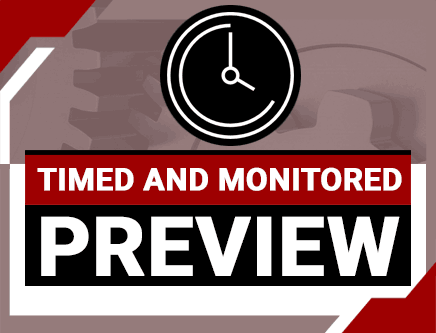Engineer's Skills for the Internet of Things (IoT) (Ohio Timed & Monitored)
Credit: 4 PDH
Subject Matter Expert: George Petrescu, P.E., PhD
In Engineers' Skills for the Internet of Things (IoT), you'll learn ...
- The structure and components of the Internet of Things (IoT) and the user base for IoT projects
- How the use of Model Based Engineering (MBE) can improve the design and quality of the IoT products
- The foundations of Artificial Intelligence, including the ways the Engineer can interact with it
- Typical steps taken for big data analysis and the challenges faced when analyzing big data
Overview

To meet the Ohio Board's intent that online courses be "paced" by the provider, a timer will be used to record your study time. You will be unable to access the quiz until the required study time of 200 minutes has been met.
Credit: 4 PDH
Length: 68 pages
Over the past couple of decades or more, the Internet of Things (IoT) has evolved into a recognized industry paradigm. To support it, industry estimates show that by year 2030 the demand for IoT-related technical skills will not only drastically increase but also need to be further augmented by higher cognitive skills and more in-depth social and emotional skills. In this new era of evolution, the Engineers' skills must adapt and advance to successfully answer the current and future IoT Product demands.
Getting the IoT ecosystem to work better than the sum of its parts requires much more than the basic technical skills currently espoused by Engineers. This course is answering this need by briefly introducing some of the new disciplines that support the IoT: emerging disciplines (Data Engineering, Virtual Reality / Virtual Twin, Artificial Intelligence, Cybersecurity), collaborative disciplines (Design Standardization across disciplines and organizational functions, Event Stream Processing), and blended disciplines (Systems Engineering and Concurrent Engineering), among others. Additionally, a number of practical and specific IoT Engineering Design principles are presented.
The Engineers' skills demanded by those disciplines, in both the technical and non-technical realms, are presented and analyzed: managing Complexity, making sense of Big Data, Lateral Thinking and Natural Language Processing. Moreover, measures to handle Cybersecurity and Managers' skills required to manage IoT projects and teams are shown in dedicated sections, as those are some of the most critical IoT areas.
The foundational learnings acquired in this course, enhanced by a few practical examples, will allow the interested readers to not only be better in their daily functions, but also further expand their knowledge as IoT evolves.
This course will answer the needs of Engineers of all disciplines, Engineering Project Managers and Engineering Managers who are interested in being ready for the new paradigm of the 21st Century - the Internet of Things.
Specific Knowledge or Skill Obtained
This course teaches the following specific knowledge and skills:
- Learn what are the specific design requirements for IoT Projects and ways to address them
- Learn what is Virtual Reality and Virtual Twin and how they improve product quality
- Become fully familiar with the Cybersecurity principles and measures to achieve a satisfactory Cybersecurity plan
- Learn how to improve design of the IoT products by using IoT libraries of components
- Assimilate the Systems Engineering principles, advantages and challenges, and how they apply to IoT projects
- Assimilate the Concurrent Engineering principles, advantages and challenges, and how they apply to IoT projects
- Understand how Complexity affects IoT projects, how problems can be handled in the simple-to-chaotic domains, and what are the associated methods and strategies to handle complexity
- Understand the Gödel's Incompleteness Theorem and learn strategies to handle complex problems in the light of this theorem
- Learn the Bayesian theory for pattern recognition, Bayesian networks and know how to apply them
- Understand the Lateral Thinking Method, and strategies to apply it
- Learn the function of the Natural Language Processing algorithms and how they are used to help Artificial Intelligence
- Understand the specific Engineering Managers' skill required to successfully deliver IoT projects
Certificate of Completion
You will be able to immediately print a certificate of completion after passing a multiple-choice quiz consisting of 20 questions. PDH credits are not awarded until the course is completed and quiz is passed.
| This course is applicable to professional engineers in: | ||
| Alabama (P.E.) | Alaska (P.E.) | Arkansas (P.E.) |
| Delaware (P.E.) | District of Columbia (P.E.) | Florida (P.E. Area of Practice) |
| Georgia (P.E.) | Idaho (P.E.) | Illinois (P.E.) |
| Illinois (S.E.) | Indiana (P.E.) | Iowa (P.E.) |
| Kansas (P.E.) | Kentucky (P.E.) | Louisiana (P.E.) |
| Maine (P.E.) | Maryland (P.E.) | Michigan (P.E.) |
| Minnesota (P.E.) | Mississippi (P.E.) | Missouri (P.E.) |
| Montana (P.E.) | Nebraska (P.E.) | Nevada (P.E.) |
| New Hampshire (P.E.) | New Jersey (P.E.) | New Mexico (P.E.) |
| New York (P.E.) | North Carolina (P.E.) | North Dakota (P.E.) |
| Ohio (P.E. Timed & Monitored) | Oklahoma (P.E.) | Oregon (P.E.) |
| Pennsylvania (P.E.) | South Carolina (P.E.) | South Dakota (P.E.) |
| Tennessee (P.E.) | Texas (P.E.) | Utah (P.E.) |
| Vermont (P.E.) | Virginia (P.E.) | West Virginia (P.E.) |
| Wisconsin (P.E.) | Wyoming (P.E.) | |




